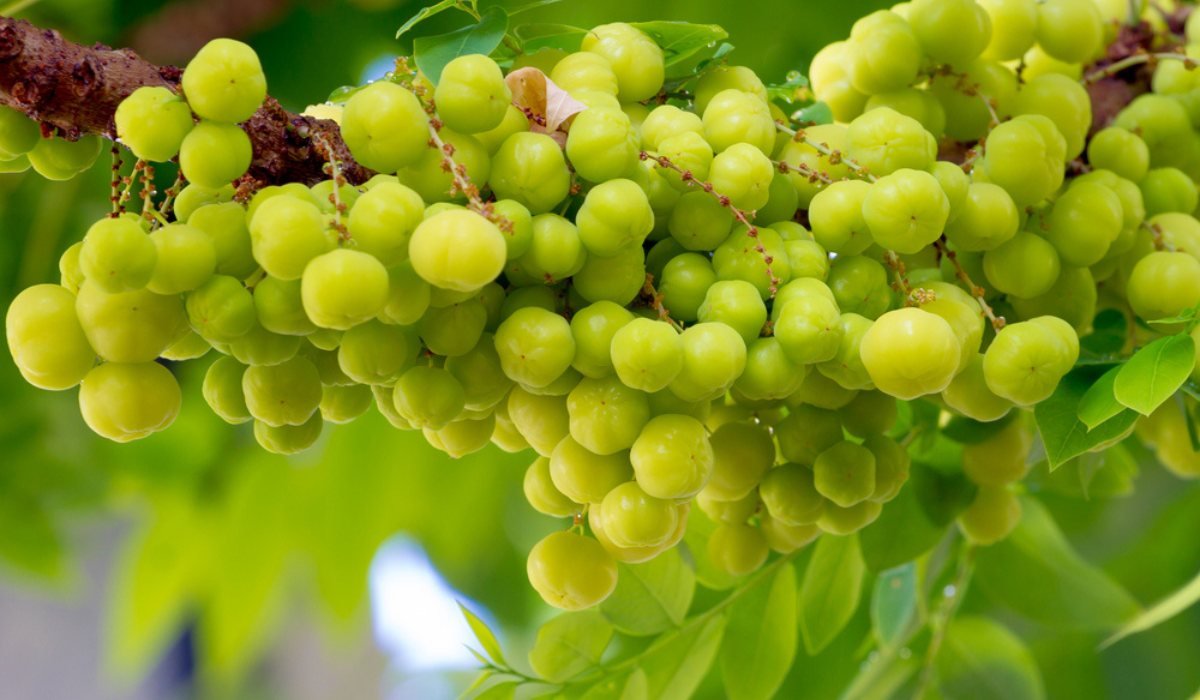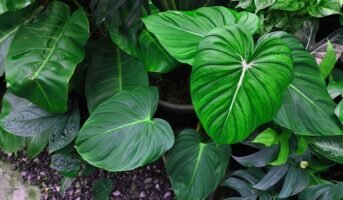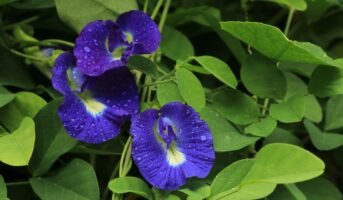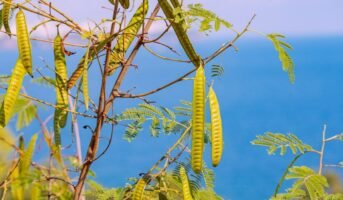What is Phyllanthus Acidus?
Phyllanthus Acidus, also known as gooseberry, is a tiny, healthy fruit with numerous benefits. The tree typically blossoms and bears fruit twice a year. Fruits appear at the same time as blooms. As a result, the tree frequently has fruits hanging from it year-round. The fruit is primarily used to make pickles and jams.
Flowers are tiny and pinkish, appearing in clusters. Blooms form in the top section of the tree on the leafless branches of the main branches. The fruits are waxy, pale yellow or white, crisp, juicy, and quite sour. Each fruit contains only one seed.

Source: Pinterest
Phyllanthus Acidus: Key facts
| Common name | Gooseberry |
| Botanical name | Phyllanthus acidus |
| Other common names | Otaheite Gooseberry, Malay Gooseberry, Chermai |
| Family | Phyllanthaceae |
| Light preference | Full sun |
| Temperature | 14°C-35°C |
| Height | 2m to 9m |
| Water preference | Moderate |
| Growth rate | Fast |
| Maintenance | Low |
| Soil | Moist soils, well-drained soils, fertile loamy soil |
Phyllanthus Acidus: How to grow?
Gather Phyllanthus acidus seeds
Phyllanthus acidus fruit is split in half after the pit is removed. Crack the pit with a nutcracker or hammer and remove the sharp, reddish-brown seeds. Any seeds with obvious defects or stains should be discarded.
Soak the seeds in water overnight
To identify which seeds are viable, soak them in a dish of water overnight. Plant the seeds that sink to the bottom and reject the ones that float to the surface. This is a critical phase because 100 per cent of sunken seeds will germinate.
Soak the seeds in hot water for 30 minutes
Soak the seeds in a dish of hot water for five minutes to enhance germination. Cover the bowl with a dishcloth to keep the heat in. Drain the seeds and sow them right away.
Prepare the soil and plant the seeds
Fill 4-inch pots halfway with potting soil and halfway with compost. Pour water over the soil mixture until it feels damp all around. Sow one seed at a depth of about 1/4 inch in each pot.
Keep the pots warm
Put the containers in direct sunlight.
Maintain soil moistness
Check the soil moisture twice daily to ensure that it does not completely dry out. If the soil seems just moist beneath the surface, water to a depth of 2 inches. Avoid allowing the soil to dry up, but also avoid making it wet.
Keep an eye out for seedlings
In around three weeks, you should notice the first seeds. Once the seeds germinate, remove the propagation mat. Grow the seedlings in bright, sheltered surroundings until the last spring frost has passed.
Provide dappled shade for seedlings
Grow the Phyllanthus acidus seedlings in partial shade with one to two inches of water per week during their first summer. In late summer, gradually acclimate them to increased sunlight intensity. Transplant them into a permanent bed or container in the fall.
Phyllanthus Acidus: Caring tips
Phyllanthus acidus tolerates a wide range of soil types but prefers moist, well-drained soil. These plants thrive in full sun and produce sweeter fruits, but they can tolerate mild shade. They can be grown in the ground or in big containers filled with soil-based compost. Water your plant regularly and keep your eyes open for aphids, spider mites, and mealybugs.
Light: It grows well in full sunshine to partial shade.
Soil: It thrives in well-drained, rich soils. A pH value can range from mildly acidic to slightly alkaline.
Water: During the growing season, water your plant regularly. You can let the top 1 inch of soil dry between waterings.
Fertiliser: During the growing season, nourish with any organic fertiliser once a month.
Propagation: It can be easily spread through air-layering, budding, greenwood cuttings, and seed, which can bear fruit in four years.
Pests and Diseases: There are no major pest or disease issues. Keep an eye out for aphids, spider mites, and mealybugs.
Phyllanthus Acidus Benefits
- Its fruits can be eaten raw or cooked.
- It is frequently used in relishes and chutneys, as well as boiled as a flavouring in sweets.
- The fruit is occasionally used in place of tamarind.
- The wood is also used as fuel.
- The bark is used as a tanning agent.
Phyllanthus acidus: General benefits
- It provides antioxidant properties.
- It is abundant in vitamin C.
- It is low in calories with a high fibre content.
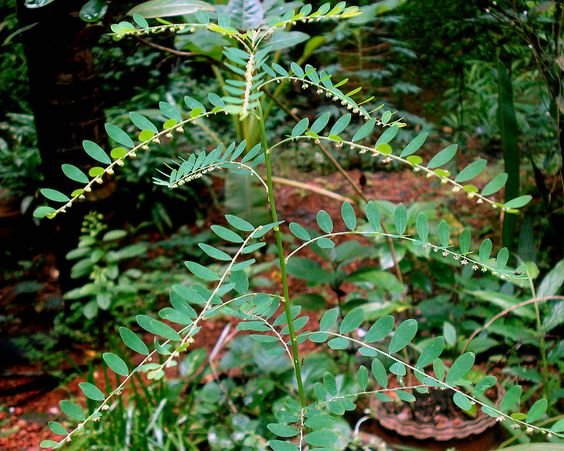
Source: Pinterest
Phyllanthus acidus: Medicinal benefits
- In traditional medicine, Phyllanthus acidus is used to cure a variety of diseases like inflammation, rheumatism, bronchitis, asthma, respiratory disorders, hepatic illnesses, diabetes, and hypertension.
- Phyllanthus acidus extracts can potentially be useful in the prevention of Alzheimer’s disease, which is caused by oxidative damage to brain cells.
- It is also used in treatment for fever control.
- It can lower the risk of some forms of cancer.
- It can reduce your risk of heart disease
Phyllanthus acidus: Known hazard
The root bark juice is mildly toxic.
FAQs
Can planters, flowerpots, and other containers be used for growing Phyllanthus acidus?
Yes. When growing in a container, the container must be chosen carefully.
No, it is not possible to grow it as a houseplant indoors.
How much time does it take to produce fruit?
It takes 3 to 4 years to produce fruit.
Housing News Desk is the news desk of leading online real estate portal, Housing.com. Housing News Desk focuses on a variety of topics such as real estate laws, taxes, current news, property trends, home loans, rentals, décor, green homes, home improvement, etc. The main objective of the news desk, is to cover the real estate sector from the perspective of providing information that is useful to the end-user.
Facebook: https://www.facebook.com/housing.com/
Twitter: https://twitter.com/Housing
Email: [email protected]
